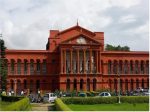
LAC standoff: China reaches out to India; says meet us halfway
PTI, Jun 26, 2020, 9:50 AM IST

New Delhi: Reaching out to New Delhi after rising tensions in eastern Ladakh to a fever pitch, China on Thursday said that it was ready to work with India to properly deal with the military standoff, and asked it to meet them halfway, asserting that “suspicion and friction” was a wrong path that goes against the fundamental aspirations of people of the two countries.
In an interview to PTI, Chinese Ambassador Sun Weidong said that India and China are able to properly manage their differences, but at the same time put the onus on New Delhi to ease the tension, and called upon it to avoid taking actions that may “complicate” the situation in eastern Ladakh.
“We hope the Indian side meets the Chinese side halfway, avoids taking actions that may complicate the border situation and takes concrete actions to maintain stability in the border areas,” he said and went on to add that at present, the overall situation in the China-India border areas is “stable and controllable.”
The Indian and Chinese armies are locked in a bitter standoff in multiple locations in eastern Ladakh for the last six weeks, and the tension escalated manifold after 20 Indian soldiers were killed in a violent clash in Galwan Valley on June 15.
The Chinese ambassador said “mutual respect and support” is a sure way and meets the long-term interests of both countries, but asserted that the onus was not on China to ease tensions in the region.
“China and India are both large developing countries and emerging economies with more than one billion people, and both have the historic mission of realizing our own development and revitalization,” he said.
“The onus is not on China. The Indian side crossed the LAC (Line of Actual Control) for provocation and attacked the Chinese border troops. The Indian forces seriously violated agreements on border issues between the two countries,” he said.
In the course of the interview, Sun repeated the Chinese government”s stand — which has been rejected by India — that Indian troops are responsible for the Galwan Valley clashes and indicated that the onus was on India to improve the situation in eastern Ladakh.
At a weekly media briefing, External Affairs Ministry Spokesperson Anurag Srivastava held China directly responsible for the border standoff saying it has been amassing a large contingent of troops and armaments along the LAC since early May and conduct of the Chinese forces has been in complete disregard of all mutually agreed norms.
Srivastava also said the deployment of a large body of troops and changes in behavior has also been aggravated by “unjustified and untenable claims” including over the Galwan Valley.
Emphasizing that the path of “suspicion and friction” was wrong and goes against the fundamental aspiration of the two peoples, the ambassador said,”China and India are willing and able to properly manage differences.”
In the last few weeks, both sides have held a series of diplomatic and military talks to cool down the temperature even as the Chinese military has increased its presence in all sensitive areas along the 3,500 km Line of Actual Control (LAC), the de-facto border.
Under the guidance of the important consensus reached by the leaders of the two countries, “we are ready to work with the Indian side to properly deal with the current situation, jointly uphold peace and stability in the border areas, and ensure a sound and steady development of bilateral relations.”
In their informal summit in the Chinese city of Wuhan in 2018, Prime Minister Narendra Modi and Chinese President Xi Jinping underscored the importance of maintaining peace and tranquillity in all areas of the India-China border region in the interest of the development of bilateral relations.
The summit had taken place months after a 73-day military face-off between the two armies in Doklam that raised fears of a war between the two Asian giants.
After the killing of 20 Indian soldiers in Galwan clashes, India called it “a premeditated and planned action by China” and sent a veiled warning to China saying “India wants peace but if provoked, India is capable of giving a befitting reply”.
Referring to talks between foreign ministers of the two countries on June 17, the envoy said that both sides agreed to “fairly address” the serious situation caused by the Galwan conflict and vowed to jointly follow the consensus reached at the commander-level meeting on June 6 to ease the situation as soon as possible.
Sun said that China would not like to see a similar situation like the Galwan clashes, but repeated Chinese foreign ministry’s allegations that India was responsible for it.
The Ambassador said that the two sides kept peace for decades in Galwan Valley, but alleged that since the beginning of 2020, the Indian side has built facilities at or the crossing of the LAC in the Galwan Valley, thereby “constantly changing the status quo of ground control.
On May 6, he claimed the Indian troops crossed the LAC in the Galwan Valley by night and trespassed into Chinese territory.
“They resorted to violent means to create a standoff between the two sides and built infrastructures in an attempt to maintain a permanent presence,” he alleged.
In his briefing, Srivastava said that Indian troops have been patrolling the Galwan Valley for a long time and all infrastructure built by the Indian side has always been on its side of the LAC.
Sun said that Chinese side lodged representations on multiple occasions to the Indian side through military and diplomatic channels following the incident and that India agreed to withdraw its personnel from the area.
The two sides held Lt General-level talks on June 6 during which they agreed on disengagement of troops from all the standoff areas.
The ambassador said that the Indian side promised in the talks that they would not cross the estuary of the Galwan river to patrol and build facilities, adding the two sides agreed to build observation posts on either side of the Galwan river mouth.
“However, after the commander-level meeting, when the situation on the ground was already easing, the Indian border troops copped out on the consensus reached at the commander-level meeting, demanded that China dismantle its observation post,” he alleged.
India has been consistently maintaining that Galwan Valley clashes had taken place on the Indian side of the LAC.
The envoy also said that actions taken by the Indian side are not in consonance with the spirit of several agreements signed by the two countries.
Udayavani is now on Telegram. Click here to join our channel and stay updated with the latest news.
Top News
Related Articles More

2 Indian restaurants in Colorado duped investors of USD 380K: Officials

WATCH: 5 runaway military horses cause mayhem in London

Don’t blame Dubai’s freak rain on cloud seeding

Who would lead if US stepped off world stage? asks Biden

Sexual harassment case: HC declines to suspend prison sentence of former TN special DGP
MUST WATCH
Latest Additions

NIA arrests key accused in 2023 attack on Indian High Commission in London

Three persons run over by train in Bengaluru

Indian nationals aboard ‘MSC Aries’ in good health, return delayed due to technicalities: MEA

Husband has no control over wife’s ‘stridhan’: SC

IT sleuths threatening raided leaders to claim money belongs to me, Cong: DK Shivakumar
























